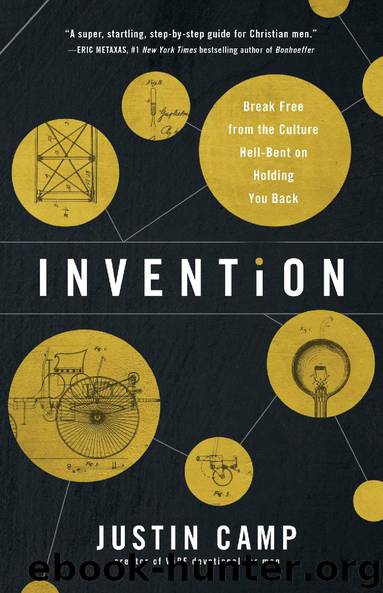Invention by Justin Camp

Author:Justin Camp [Camp, Justin]
Language: eng
Format: epub
Tags: REL012070 Religion / Christian Life / Personal Growth
Publisher: David C Cook
BELL AT THE PEMBERTON AVE. (LATER HORACE MANN) SCHOOL FOR THE DEAF (AT THE TOP OF THE STAIRS, ON THE RIGHT)
BOSTON, MASSACHUSETTS, 1871
Boston was good for Bell. The city was becoming an epicenter of technological innovation and discovery. But as he tended to do, he got busy. Very busy. In addition to teaching, he began tutoring. Then in 1873 he became a professor at Boston University.
As a teacher and tutor, Bell was professional; but as an inventor, he was dogged. For when not teaching or tutoring, he withdrew to his rented rooms-turned-workshop and focused solely on his experiments.
And soon Bell’s quest to transmit speech by wire became a race. Though not yet able to transmit clear speech, a formidable man named Elisha Gray had, by early 1874, transmitted music. Gray was a co-founder of the Western Electric Company, an expert in electricity—something Bell was not. But Bell was an expert in sound, and especially how humans produced and heard it—something Gray was not. So the race was on, and history awaited the winner.
In the summer of 1874, Bell made a critical breakthrough. It occurred to him that sound waves travel through air the same way electrical currents flow through conductors, like wires. He surmised, therefore, that he could build a transmitter to convert sound waves into electrical current and a receiver to convert current back into sound.
Soon thereafter, Bell had another breakthrough. He met Thomas Watson. Watson was a practical man, an engineer and designer, who could build almost anything Bell theorized and described. Bell needed Watson, and Watson liked Bell. He liked Bell’s “buzzing ideas.” 2
Their work began to culminate when Bell, through a device in one of his rooms, heard Watson fiddling with the spring in a device in another. The acoustic vibrations created just the kind of sound-shaped electrical current Bell had dreamed about and hoped for. The men worked excitedly until midnight. “Before we parted,” recalled Watson, “Bell sketched for me the first electric speaking telephone, beseeching me to do my utmost to have it ready to try the next morning.” 3 Watson did—and it did transmit sound—though still not clear speech.
Growing impatient, though, and in one of the most opportune moves in history, one of Bell’s financial backers (and his future father-in-law) took some initiative and instructed Bell’s lawyer to file for a patent with the US Patent Office on Bell’s behalf. The patent described what Watson had built.
In an amazing coincidence, later that very same morning, Elisha Gray too made a filing with the Patent Office. He filed a caveat. A caveat was a notice to other inventors that a particular inventor was working on a particular invention. Once filed, subsequent filings for similar inventions had to be examined before patents could be granted in order to make careful determination of who had invented first. Gray’s caveat described an invention like Bell’s.
But since Bell’s patent was not a subsequent filing—by a matter of minutes—and because Bell could produce evidence he was first to invent, Bell won the race to invent the telephone.
Download
This site does not store any files on its server. We only index and link to content provided by other sites. Please contact the content providers to delete copyright contents if any and email us, we'll remove relevant links or contents immediately.
The 5 Love Languages: The Secret to Love That Lasts by Gary Chapman(8493)
The Space Between by Michelle L. Teichman(6086)
Assassin’s Fate by Robin Hobb(5236)
Wiseguy by Nicholas Pileggi(4585)
Everything Happens for a Reason by Kate Bowler(4067)
Gerald's Game by Stephen King(3918)
A Simplified Life by Emily Ley(3567)
The Power of Positive Thinking by Norman Vincent Peale(3447)
Pillow Thoughts by Courtney Peppernell(3395)
Resisting Happiness by Matthew Kelly(2886)
Girl, Wash Your Face by Rachel Hollis(2821)
Being Aware of Being Aware by Rupert Spira(2706)
Name Book, The: Over 10,000 Names--Their Meanings, Origins, and Spiritual Significance by Astoria Dorothy(2490)
Real Sex by Lauren F. Winner(2474)
More Language of Letting Go: 366 New Daily Meditations by Melody Beattie(2442)
The Holy Spirit by Billy Graham(2414)
Fast Facts on Defending Your Faith by John Ankerberg & John Weldon(2388)
Victory over the Darkness by Neil T. Anderson(2385)
The Secret Power of Speaking God's Word by Joyce Meyer(2252)
